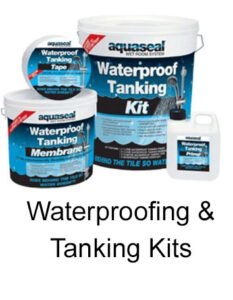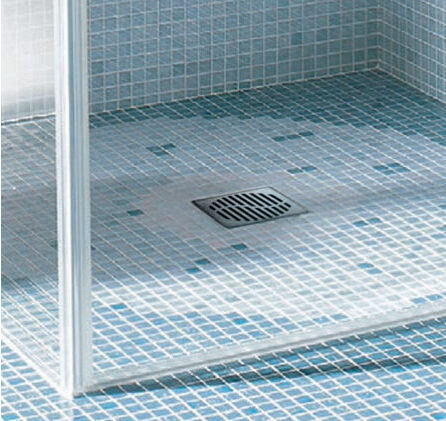Wet rooms are a great alternative to a shower or bathroom. Providing practicality, style and a touch of luxury, wet rooms are becoming increasingly popular, and we’ve created a guide on how to install a wet room yourselves. Before installing a wet room it is important that you have measured the dimensions of the space and created an accurate layout plan. Known for being stylish and for adding value to a property, wet rooms are also fantastic for mobility issues. You can open up your home to elderly guests with accessibility issues which can make visits more convenient for family members.
Wet rooms are extremely easy to clean too, you can just use a standard bathroom cleaner all around the tiles, panels and shower unit.
What do I need to install a wet room?
- Pipe connector
- Marine plywood
- Shower tray
- Shower gullies
- Waterproofing and tanking kit
- Adhesive
- Underfloor heating (optional)
- Channel drainage (optional)
- Tiling
- Wet room panels
Step-by-step install of a wet room
Step 1. Remove all existing floor coverings and skirting
Using firrings, you can raise the joists around the lowest point of the floor to ensure there is a 10mm fall over 2m. This will allow water to run off into the drain. However, if the shower tray has a fall already and water is not going to be going outside of the shower, you may not need to create further falls in the floor.
Step 2. Place the shower tray where desired, and mark around it
You need to also mark where the nearest joists are.
Step 3. Cut along the marked lines with a circular saw
Ensure you do not hit any surrounding pipes or wires. Once you’ve cut along the lines, remove the loose floorboards.
Step 4. Insert battens between the joists, and fit marine plywood on top
This will create a solid layer on which to fit the shower tray.
Step 5. Lay the shower tray down, mark the drain location, and then remove again
Now you’ve marked the location of the drain, cut a hole in the floor to allow for the drainage gully.
Step 6. Remove the marine plywood so that you can fit the drain and waste pipes
Use a connector and adhesive to connect your gully to your waste pipe – we’d recommend using a solvent glue. It is important to ensure that the top of the drainage trap is level and central to the shower tray so that it will easily connect when you install the shower tray. Don’t forget to test the drain for leaks before continuing with the installation.
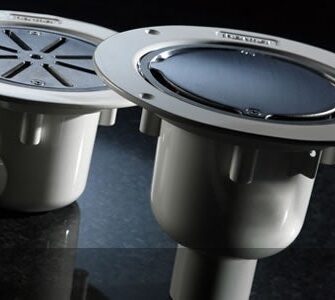 Step 7. Secure the marine plywood onto the joists and battens
Step 7. Secure the marine plywood onto the joists and battens
It is important to ensure the drain has been tested and does not leak before securing the plywood down.
Step 8. Place the shower tray down and fill gaps
Use the floorboards that were previously lifted to fill any gaps that have been left between the joists and the shower tray. Once you have done this, remove the shower tray again.
Step 9. If your shower tray is above the floor level, install the insulated board on the floor
Choose a thickness that will bring the floor level up to the shower tray, or the depth of a tile below if the shower tray will be tiled as well.
Step 10. Use floor primer using protective gloves to cover the complete flooring area
Once applied, leave to dry.
Step 11. Use a membrane or liquid tanking product to create a complete waterproof layer
For extra leakage or moisture prevention, you should also use pro-seal tape across all board or membrane joints, ensuring it is half on the tray or floor and a half on the wall, and install internal corners with adhesive.
Step 12. Spread adhesive over the floor where the shower tray will be located, and add a sealant to the drainage trap
Now lower the shower tray onto the floor. Once the shower tray is down reached into the hole and pull the drainage trap up into position until it clicks. Check the edges are level and then leave to dry. If you’re planning to install underfloor heating then this should be the next step before tiling.
Step 13. The next step is to install your tiling
We’d recommend choosing tiles with slip resistance, and remember that the tiles must be able to accommodate the fall to the drain, which is why mosaics and small tiles are often chosen.
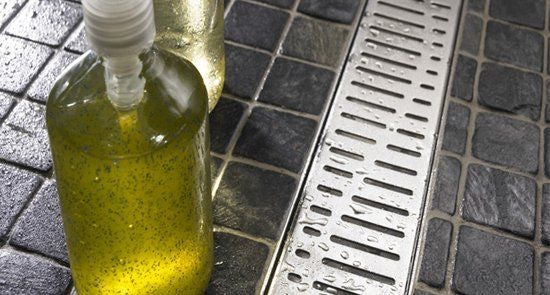
Step 14. Fit the shower drain onto the gully
Place the drain into the hole, and measure the distance from the finished tiles to the top of the shower, and cut this distance from the bottom of the drain section. Once cut, this can be secured in place using a wet room or bathroom adhesive.
Step 15. Install waterproof walls and ceiling
We recommend easy-to-fit tongue-and-groove Geopanels. Before fixing, it is important to ensure that the Geopanels have been trimmed to the correct size, leaving a 3-4mm clearance around any pipes or accessories. Geopanels should be fixed directly to battens, using shower panel adhesive or screws, staples or panel pins.
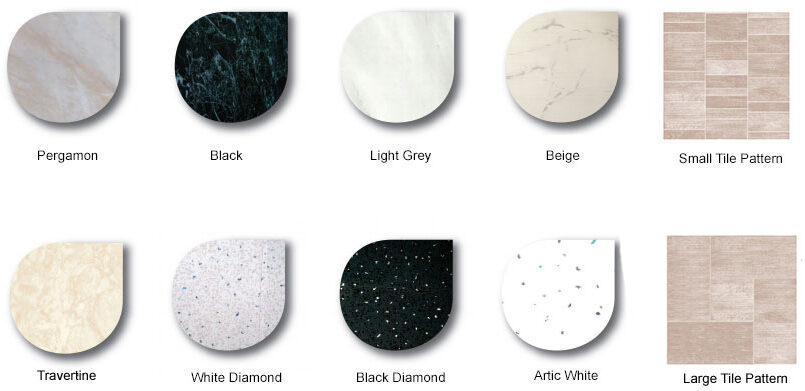
Top tip for Geopanels: Start fitting Geopanels at the corner furthest from the door and panel across in both directions, ensuring the last panel is fitted above the doorway. If you have any outer edges, for example, if your wet room panelling is not extending around the entire room, but just in the proximity of the shower, finish them with U trims. Shower panel sealant should be used to seal joints between panels, as well as internal and external corner profiles where required and to secure covers around any pipes or accessories.
It is important to allow at least 12 hours between tiling and fitting the floor and walls before installing a shower enclosure or deflector to allow them to set and provide extra support
For more information or help and guidance on how to install a wet room, or for any information about sourcing the materials needed, contact our drainage experts on 01752 692 221 or use our live chat in the bottom right.



